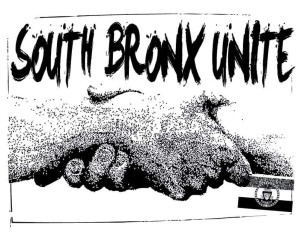The Fight for Change in Asthma Alley
Joanne Guerra
SUS 200
THE FIGHT FOR CHANGE IN ASTHMA ALLEY
When you’re born and raised in New York City you learn to deal with all kinds of smells. Smells that range from sizzling scrumptious pizza to week-old garbage. The first time I ever left Queens to go into the big city I remember coming out of the subway and immediately feeling my lungs almost collapse because the air was so different (read: polluted). The air was thick and the buildings made me feel smaller than what I was. I became claustrophobic in a large open street. I had that same kind of experience when I visited the South Bronx.
Our SUS 200 class had the pleasure of having a tour guide throughout our class trip. Mychal Johnson, co-founder of South Bronx Unite (southbronxunite.org) and active member of his community acted as our tour guide while in the South Bronx. Johnson had a wealth of knowledge about the area and was greeted enthusiastically everywhere we went. We walked past Interstate 87 and finally made it to the Harlem River. As Johnson began explaining the Mott Haven-Port Morris Waterfront Plan my throat began to get itchy and I could feel my sinuses start to work overtime. The thickness of the air took me by surprise and I tried coughing to clear my throat. Johnson gave me a knowing head nod. I was in the heart of “Asthma Alley.”
South Bronx Unite has done there best to encourage the implementation of the Mott Haven-Port Morris Waterfront Plan. The plan aims to give waterfront access to its community and create more green spaces. Currently, the South Bronx is riddled with heavy industry factories that produce incredible amounts of waste and airborne pollutants. By creating these green spaces, it not only adds to the quality of life to it’s residents but discourages any more additions to industrial giants.
The Institute for Civil Infrastructure Systems reports, “In some neighborhoods in the Bronx it is estimated that 20% of the children have asthma. Within New York City the disparity in asthma hospitalization rates is very pronounced. According to a study, hospitalization rates for asthma in Bronx County and East Harlem are 21 times higher than those of affluent parts of the city.” Garbage truck after garbage truck passed me, as Johnson explained that although they could not completely eradicate the source of pollution, the Mott Haven-Port Morris Waterfront Plan was a step in the right direction to begin to mitigate their problems.
On October 13th 2015, Mayor De Blasio met with South Bronx Unite where they took a stand on allowing “Fresh Direct” from moving into their already strained community in the South Bronx. If Fresh Direct moves into the neighborhood, there will be more and more garbage trucks moving through. Ultimately, this has the potential to make the air pollution in the area significantly worse. The conversations went well and Fresh Direct’s plans to move to the South Bronx might be foiled. I’m lucky to have grown up in a borough that had more parks, clean air, and heavy restrictions preventing large industrial factories from moving in next door. My hope is that members of the community can take back their borough and take a large nourishing breath in.
To learn more about the waterfront project visit http://southbronxunite.org/a-waterfront-re-envisioned/state-designation-as-priority-project-on-draft-open-space-plan/.
Sources:
http://www.icisnyu.org/south_bronx/AsthmaandAirPollution.html
